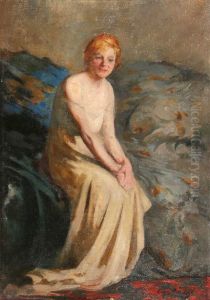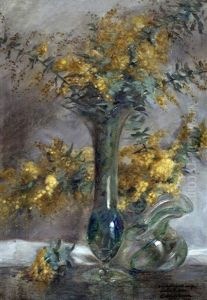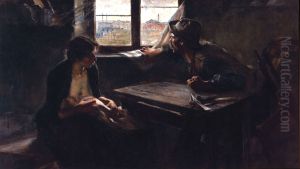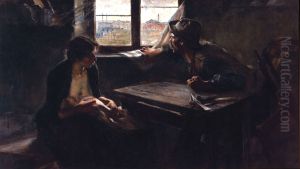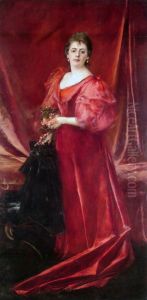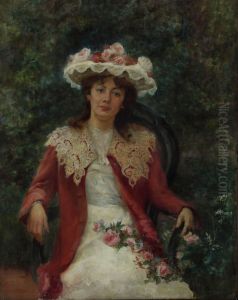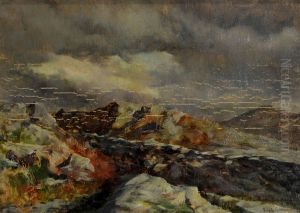Ernesto De La Carcova Paintings
Ernesto de la Cárcova was an Argentine painter, one of the pioneers of realism in his country and a key figure in the development of Argentine art at the turn of the 20th century. Born on March 3, 1866, in Buenos Aires, de la Cárcova showed an early interest in art and pursued his passion by studying at the Sociedad Estímulo de Bellas Artes in Buenos Aires. His talent and dedication to his craft led him to further his studies in Europe, a common practice among artists from Argentina at the time, who sought to refine their skills and absorb new influences from the continent's art capitals.
During his time in Europe, de la Cárcova was particularly influenced by the realist and naturalist movements, studying in Italy and Spain, where he absorbed the techniques and themes that would later define his work. Upon returning to Argentina, he dedicated himself to painting scenes of social and historical significance, often focusing on the plight of the working class and the social injustices of his time. One of his most famous works, 'Sin pan y sin trabajo' (Without Bread and Without Work), painted in 1894, poignantly depicts the despair of unemployment and became an iconic representation of the social struggles in Argentina during the late 19th century.
Beyond his contributions as an artist, Ernesto de la Cárcova played a significant role in the development of art education in Argentina. In 1905, he was instrumental in the founding of the Escuela Superior de Bellas Artes de la Nación, now known as the Ernesto de la Cárcova School of Fine Arts, which was among the first institutions in Argentina dedicated to the professionalization of the arts. He served as its director, fostering a new generation of Argentine artists and promoting a comprehensive approach to art education that combined practical instruction with theoretical studies.
De la Cárcova's work and his commitment to art education left a lasting legacy in Argentina. His paintings are celebrated for their technical skill, emotional depth, and social commentary, and his efforts in education have influenced countless artists. Ernesto de la Cárcova's contributions to Argentine culture were widely recognized during his lifetime and continue to be honored today. He passed away on December 28, 1927, in Buenos Aires, but his influence on Argentine art and society remains enduring.
